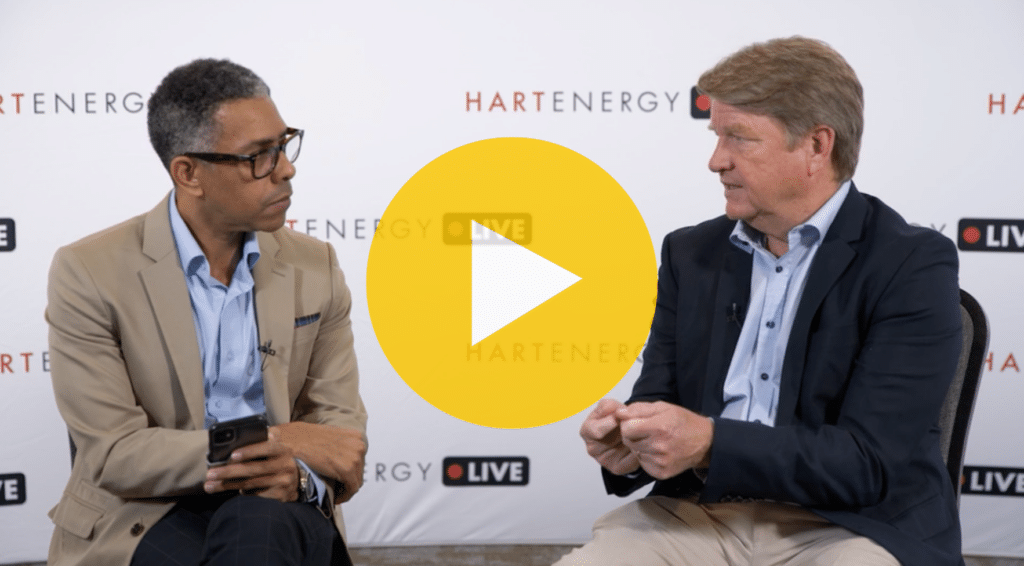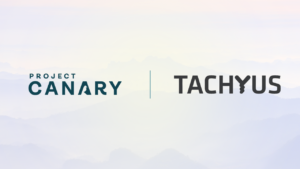In this Hart Energy LIVE Exclusive, Project Canary’s Tim Romer discusses what European and Asian natural gas buyers are looking for in responsibly sourced gas during Hart Energy’s Carbon & ESG Strategies conference.

Pietro D. Pitts, international managing editor, Hart Energy: I am Pietro Pitts, international managing editor with Hart Energy here with Tim Romer, co-CEO of Project Canary. Tim, could you tell us why it’s so important to have the Project Canary data?
TR: Yeah, thank you. And thank you for having me here today. I appreciate it. I think we’re very focused as a company to help other companies in the oil and gas energy supply chain be able to measure, understand and act to reduce their methane emissions and other GHG gases. We also help them with other environmental risks and environmental attributes, and what we do is we create data that can be — it’s independent, we collect it, we verify it, but that data can be verified and audited by third parties. The quality of that data allows a buyer to be more informed about the nature of gas that they’re going to buy. And what we’re seeing is more and more buyers want to differentiate molecules. Gas used to be viewed as a commodity, but now a variety of buyers are saying, ‘Hey, I need to understand the environmental footprint of how that gas was produced and transported.’
And that feeds into another conversation about carbon intensity. There’s a growing focus on what is the carbon intensity, and a lot of things, the carbon intensity will be dependent upon the energy supply chain. So we provide data that allows people to better understand the methane intensity through the energy supply chain, and then they can use that to work towards carbon intensities. And then it allows producers to differentiate their operations and then differentiate the molecule so that the buyer may be willing to pay a premium or maybe willing to increase volumes. So it is important too, particularly when you look at other LNG markets. People are wanting to understand the carbon intensity of the LNG, and that’s a function of the whole energy supply chain and how it’s produced, transported and then ultimately delivered.
PDP: Exactly. So what do you think the biggest headwind is to getting good emissions data?
TR: It is just knowing the quality of the data, and then you have to really know what we say is the data behind the data. So often there’s just too much data. So we think there’s a variety of emissions data available. You can get it from emission factors, which are basically calculations and assumptions about the normal emissions profile of a piece of equipment. But what we’re finding is often in real operating environments, the emission factors don’t accurately portray the true emissions. And so more and more informed buyers, more and more companies are saying, I have a very low emission profile. I want to quantify it. And so therefore you need not just data, but then you need very sophisticated physics-based and science-based models to take concentration values and convert it to mass values, because that’s how you determine the actual kilograms of emissions that are emitted on a site-wide basis. So you need really good data, but you need to understand the data so you can do the things that we say: You need to measure it, you need to understand it, and then you need to act on it.
PDP: Exactly. So outside the U.S., I mean, are you seeing more interest in your data from the Europeans, the Asians as they buy more U.S. LNG?
TR: Yeah, no, I think we’re getting a lot of inbound inquiries both out of Asia and Europe. They’re very focused on what is the carbon intensity, but as I said, other environmental attributes. What is the water intensity, if you will, that’s being used. And so we provide data both on methane intensity, but also data on other environmental attributes. And it is a very rigorous engineering-based assessment of what are the environmental best practices, how are you managing those environmental risks? And then you get a score. That gives people more information about the environmental attributes. But what they really focused on is the methane intensity because then that converts into carbon intensity.
PDP: And so when we look at countries that are looking to export more LNG, like Africa and Latin America, is there interest there as well in terms of them trying to get their gas that’s certified and ready for the European and Asian markets as well?
TR: I think so. I think what you’re going to see, particularly coming out of Europe and Asia, is every buyer just wants to know more what the energy supply chain, what does it look like? What is the carbon intensity? What are the other environmental attributes of that supply chain? I think, therefore, you’re going to get into a competitive market environment. Where LNG coming out of the U.S. will have a carbon intensity on it, and then a buyer’s going to say, well, I need to know your carbon intensity coming out of your supply and your supply chain. So I think this whole market, we call it differentiated gas. Really, it’s just providing more data, more information to buyers so they can better understand. And that may create a little bit more competition on the markets about, ‘Hey, I want to source my gas, but I need to know your carbon intensity in order for me to be willing to buy your gas versus someone else’s gas.’
PDP: Thank you, Tim. And that was our coverage with Tim Romer. For more details, go to hartenergy.com.


